Are you planning your trip and are not sure what are the most important things to know before traveling to Sardinia? You have landed in the very right place.
A land of age-old traditions, mysterious tales, incredible food, and breathtaking landscapes, Sardinia is the perfect place to visit whether you want a beach vacation or an offbeat cultural holiday. Diverse and exciting, you can plan your Sardinia trip any season of the year and enjoy every time a different aspect of the island.
If you want to improve your knowledge of Sardinia and you are not sure how to do it, or you think you know the island well enough, we are here to help and challenge you. Read on and test yourself with my things to know before you travel to Sardinia!

It’s a desert island. Or is it?
From the plane, you will have the impression of landing on a desert island where villages are small, far from each other, and with the desert countryside in between. With slightly more than 1.600.000 inhabitants and an area of about 24.000 square kilometers, Sardinia (Sardegna, Italy) is possibly the Italian region with the lowest population density.
Plan at least a week (or 10 days!) in Sardinia
The island is quite huge and even though you won’t find much traffic on the road, there are many places to visit. This is especially needed if you are looking for a good variety of experiences besides the beaches such as exploring the inland, the archaeological sites, the local traditions, and enjoying the laid-back lifestyle.
Book one of our customized Sardinia experiences!
You need to cross the Mediterranean to reach us!
Sardinia is not connected to Italy’s mainland with a bridge, so you can only reach the island by plane or ferry. If you are coming by car or campervan, your only option is to book a ferry. If you are flying, rent a car at the airport because…
You need a car to visit Sardinia
That’s right, the best way to explore Sardinia is by car. Even though we have a railway system and a wide network of extra-urban buses, they don’t reach everywhere and in many places, they are quite seldom seen.
Check Discover Cars for the best deals and to ensure options. Renting a car directly at the airport might not be successful due to the large crowds and the limited vehicles.
Get ready to gain weight
The overwhelming hospitality of the locals and our outrageously good food will conspire against your diet. Be ready, you will hardly be able to resist, both for the genuine ability to tickle your senses with food and wine and for the people’s unrelenting persuasion techniques.
We have amazing food
From incredible seafood dishes to local meat fares, surrendering to the local hospitality in Sardinia won’t be a sacrifice. Each town and village has its own typical dishes. So, if you are in Alghero, immerse in Catalan flavors, in Dorgali, tuck into the finely decorated culurgiones dumplings, while in Cabras, try bottarga mullet roe and seafood dishes.
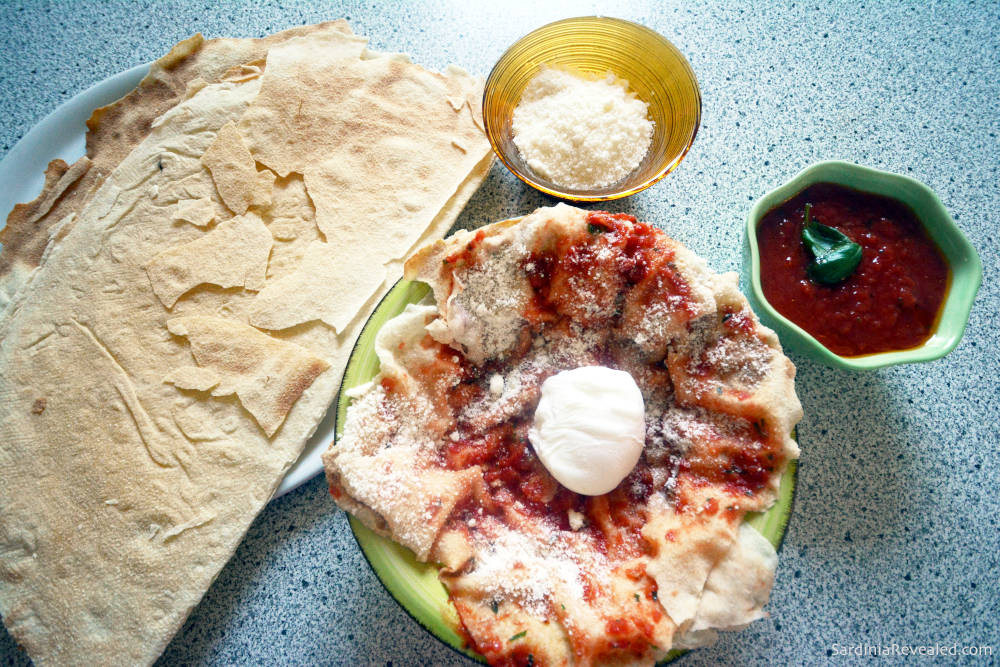
…And wine
Sardinia has many wineries producing fantastic wines, but don’t be surprised if you are offered a house wine made by a private that tastes like an award-winning product. Many families still make their own wines and the grape harvest is an occasion to gather friends and townspeople for help and offer a huge meal to everyone.
…And craft beer
Sardinians love beer, and this is not a piece of news. In fact, Ichnusa is an evergreen brand that has been exported to other Italian regions. In the last decade or so, however, craft beer is becoming more and more popular and local breweries have opened across the island.
Names like Horo from Sedilo, Brumare from Bauladu, Mezzavia from Selargius, and Barley from Maracalagonis near Cagliari have been welcomed by the locals and used for festivals and in restaurants.
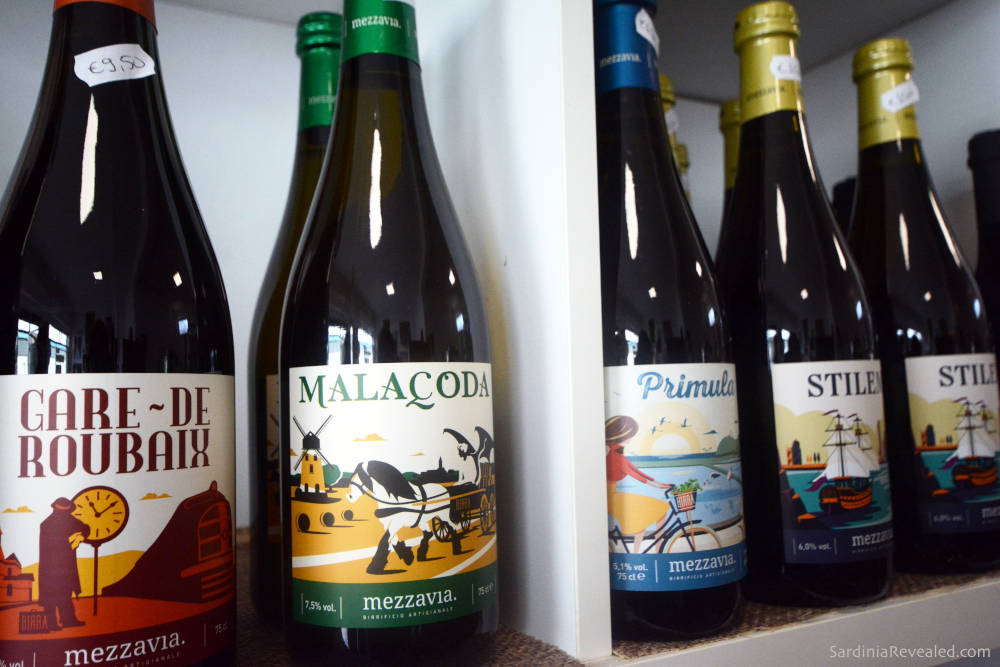
Local sweets are not too bad either
Do whatever you want but don’t skip on the local sweets. I know, it’s not something you can overdo, but Sardinian pastries and sweets are addictive. From the pardulas during Easter to the zeppole and fatti fritti for Carnival to the wine-must-filled tziriccas, any day and any occasion are good for tucking into Sardinia’s traditional sweets.
One type of bread is not enough
Just like sweets, in Sardinia, we like variety also when it comes to bread. Coccoi, carasau flatbread, pan’e prama for Palm Sunday, coccoi cun s’ou for Easter, and plenty of types of finely decorated bread for every occasion that change depending on the province, town, and village.

If you are offered rotten cheese, don’t take it as an insult
It’s actually a local delicacy and a rare one. Declared illegal a while ago, while now the casu marzu, or casu fattizzu depending on the area, is permitted, it remains not very easy to find mainly because it’s not very easy to make.
I tried it after more than 30 years of staunch refusal and I still have mixed feelings. It does come with live maggots, but it’s not rotten and is a sign of great hospitality.
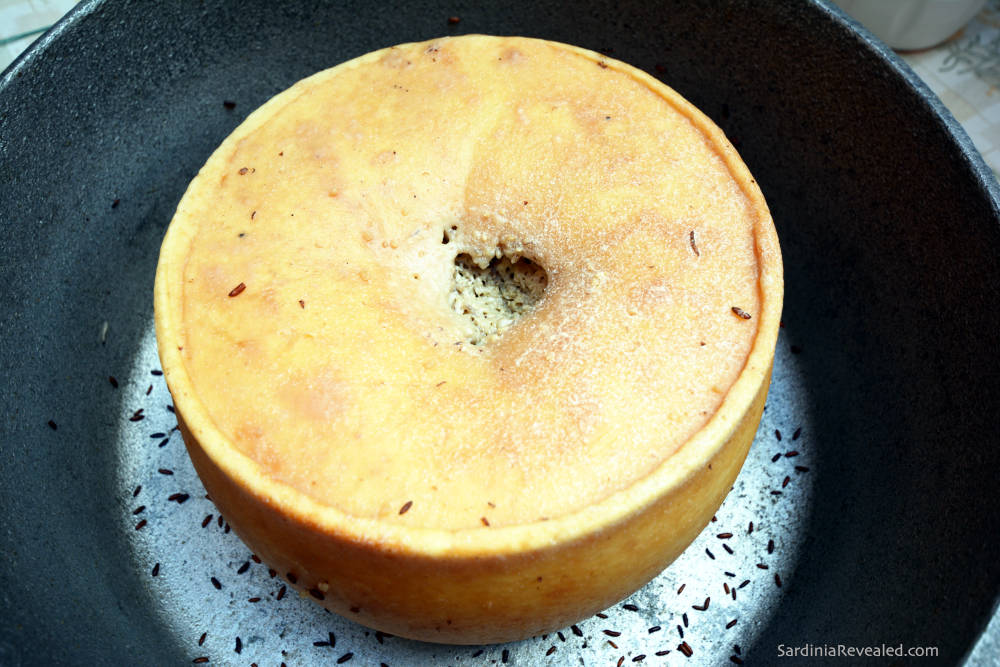
Do we speak Italian or Spanish? Maybe Latin.
You will hear a different language more similar to Spanish than Italian. Don’t worry, you are still in Italy, it’s just the local idiom. Declared an official minority language by the European Union and even listed in UNESCO’s Atlas of the World’s Languages in Danger, Sardinian is a proper language.
In fact, it bears its own dialects that change depending on the village. From north to south, people speaking their strict dialect might not understand each other. I come from the center of Sardinia so probably mine being contaminated by all surrounding dialects allows me to understand everyone.
Are you ready to travel in time?
Among the things to know before you travel to Sardinia is that you’ll travel in time repeatedly, ranging from modern towns to small villages where old traditions are still very much alive among adults and youngsters alike.
Be it a reckless horse race tribute to an emperor turned into a saint or a scary black-masked legacy of a 2000-year-old ritual, every festival is the perfect excuse for the whole town to get together and catch up with what’s new and with old friends we haven’t met for a while to cherish our own traditions whenever we can.
Parties are every other day
You will find yourself in wild parties when you least expect it. It might be Italians’ great love for food or Sardinians’ knack for parties, but every village has its own religious festivals, with some going on for days.
Whether it’s a food sagra, Carnival parties, religious commemorations, or local festivals, if you are lucky enough to happen in the middle of a traditional celebration, enjoy the festive atmosphere and the good food, locals will be delighted to welcome you.

We make dinner for the dead
No need to panic about some creepy talks and practices such as making dinner for the dead, it’s a local tradition, not some satanic ritual. This doesn’t happen everywhere, but in some villages for the night of the dead between November 1st and 2nd, the family prepares the dinner for their dead and leaves it on the table all night.
Apparently, this ritual should be respected only where it belongs, and rumors say it isn’t allowed everywhere.
The only Italian woman to ever win the Literature Nobel Prize is from Sardinia
Her name is Grazia Deledda and hailed from Nuoro, where you can still visit the house where she was born and raised. Coming from a wealthy family but born at a time when it wasn’t proper for girls with good manners to continue school, Grazia Deledda was lucky to have her father and brothers on her side. By supporting her education and studies, they have made it possible for the young writer to become a worldwide known and translated novelist.
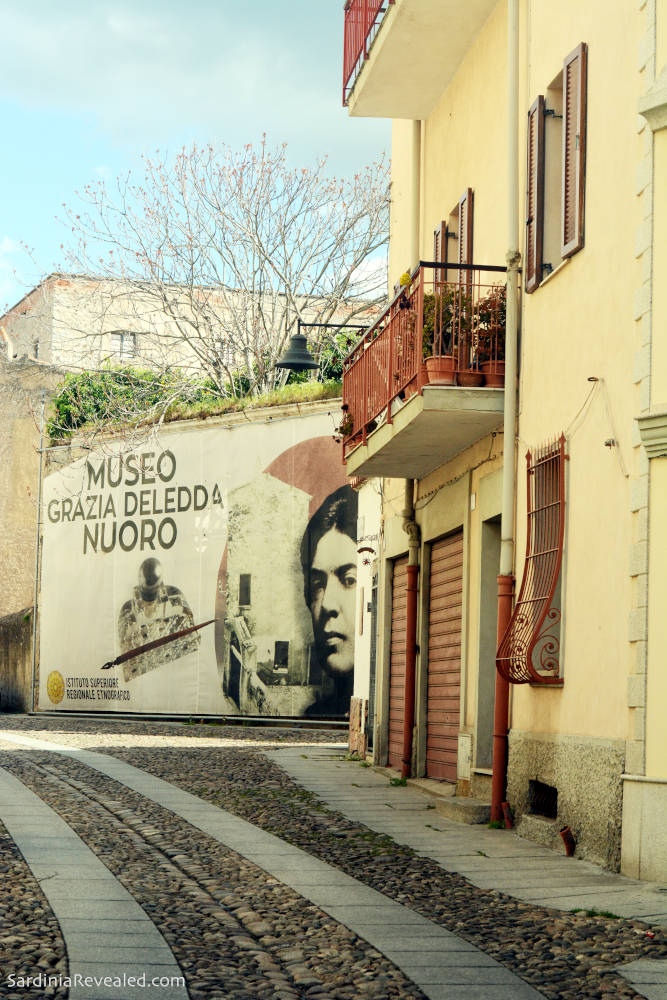
Nuoro was known as Sardinia’s Athens
Not only because it was the birthplace of Grazia Deledda but Nuoro was also of great artists such as poet and writer Sebastiano Satta, poet Pasquale Dessanay, sculptor Francesco Ciusa, musician Priamo Gallisay, and photographer Sebastiano Guiso.
Animals have the right of way
Always keep in mind that when driving on country roads, cows and sheep have the right of way. It’s been argued that in Sardinia sheep outnumber people and I have no reason to doubt that. Moreover, if we add the bovine body, you will really need to abide by the unconventional road law.
This is especially important to know because if you plan a trip to Sardinia you must consider renting a car. The public transport on the island, in fact, is next to non-existent and to reach just about anywhere, you will need your own car.
A local bandit used to run tours
There was a time, not long ago, when the famous Sardinian bandit Graziano Mesina would take you around his obstreperous village, Orgosolo, to admire the local controversial street art and feel the island’s proud character.
Always very little prone to obedience and compliance to the rule, Orgosolo is the only place in Sardinia where Nato couldn’t manage to build a military base, and still today it’s possible to see the ghost town started by the army. Hot-tempered and little patient since the invasion of Piedmont’s former royal family, the Savoys, later become unified Italy’s first and last monarchy clan, Orgosolo’s townspeople always fought against the occupiers, earning this way the infamous nickname of “bandits” that they carried up to today.
After being released from prison where he stayed some 40 years for killing his brother’s murderer, Mesina began to run tours around the village. Apparently, he was also very popular and always fully booked. However, he has been arrested again and is now in jail. You can probably book his tour when he gets out.

The forerunner of euthanasia is from Sardinia
The tale of the old woman who “helped” the terminally ill die is not a tale, it’s true. She’s known as S’Accabadora (“the one who puts an end”) and was in charge of the local ancient tools for euthanasia. That’s right, she was an old woman, every town and village had its own Accabadora.
Nobody really knew exactly who she was, they just managed to let her know when she was needed, when the pain was too unbearable and when medicine couldn’t go any further. And there she was, arriving with her tiny little hammer ready to show mercy and give the sick person some relief and eternal rest.
Discover King Solomon’s favorite fabrics
Sardinia boasts the last priestess of the ancient art of weaving sea silk, a popular craft of the Mediterranean countries dating back thousands of years ago. Her name is Chiara Vigo, she lives in Sant’Antioco, the small island facing Sardegna’s southernmost coast and she’s the master of one of the things to know before you travel to Sardinia.
The silk, called “byssus” is a fine fabric obtained from the velvety strand of the noble pen shell, an endangered fan-shaped mollusk native of the Mediterranean seabed, where Chiara dives herself in order to get the raw fiber without killing the precious shell.
The finished product would cost up to 500,000 euros, but like for every true legend, there is a trick: selling is off the table. Chiara, and all her family members before her, took an oath: the byssus cannot be sold nor used for personal gains, it belongs to everybody, just like the sea.
Delving into this type of quirky tradition, of which the island is very rich, is definitely one of the most important things to know before you travel to Sardinia!

Women wear headscarves
Or they used to. And some still do. Among the things to know before you travel to Sardinia, in fact, is that you will very likely stumble on women wearing long black skirts and headscarves.
You weren’t whirled to some conservative Middle Eastern countries, you are just experiencing some reminiscence of the Arab presence in the island’s past. There are different models, colors, and shapes depending on the Sardinian town, but the core principles are the same: long skirts, intricate and sophisticated jewelry, and headscarves.
It’s dotted with Bronze-Age towers
Calling them towers is a very simplistic way to define Sardinian Nuraghes. In fact, these ancient stone buildings from some 3500 years ago served different purposes and were usually the heart of larger villages and defensive strongholds.
As of now, the officially registered Nuraghes across Sardinia are 7000 and several Nuragic villages are open to visitors. These make for some of the most important archaeological sites in Sardinia.

We have fairies’ houses and tombs of giants
For as uncanny as it sounds, these are Sardinia’s archaeological vestiges and even older than the Nuraghes. Get lost in the myriad of fairies’ houses, giants’ tombs, and sacred wells scattered across the island, the remains of a lost civilization still shrouded in mystery. To the extent that some researchers are identifying Sardinia with the lost civilization of Atlantis!
With new discoveries being made every day, such as the army of huge stone statues in Mont’e Prama, Prama Mount, called the Giants of Mont’e Prama, much of Sardegna’s ancient history is being re-written these very days. Overall, historians agree that native nuragic civilization was very advanced and pursued profitable trades with the other Mediterranean populations.

Look for the elixir of life
Sardinia is one of the places with the highest number of over-100-year-old people in the world, and this blessing couldn’t miss the list of things to know before traveling to Sardinia. You can ask any of the local old people about their secret to longevity, they’ll be happy to reveal it to you.
They regularly put it on the trend of the moment, be it the red wine, the Mediterranean diet, or the village life. The trick, however, is well-known and involves all of them: a simple life, eating healthy and little, barely having dinner, and enjoying a glass of red wine every day.
Carnival is not always a burst of colors and wild parties
In fact, in traditional Sardinia, Carnival means scary ugly masks dancing around the fire all night. It might sound monotonous but it’s actually one of the most fascinating times of the year to visit Sardinia. In some of the most traditional places, festivities are directly linked to our ancient heritage and are more popular than modern pop music-led parties.
Should you happen in Sardinia in February, don’t miss intriguing celebrations such as Mamoiada’s Mamuthones, a 2000-year-old propitiatory ritual to please the gods, and Oristano’s Sartiglia, involving acrobatic stunts from the horses’ saddles.
Being aware of our habit of mixing pagan and Christian beliefs is one of the things to know before you travel to Sardinia and will definitely improve your knowledge of the island!

It’s a small-scale continent
By roaming from village to village during your Sardinia holiday, you’ll have the impression of being in a small-scale continent as you will find a different language, different dishes, different traditions, and different mentality in each of them.
That’s right, each town, even the smaller ones, will welcome you with its own costumes, festivals, products, handicrafts, and food, bearing as a common trait almost only the sense of hospitality.
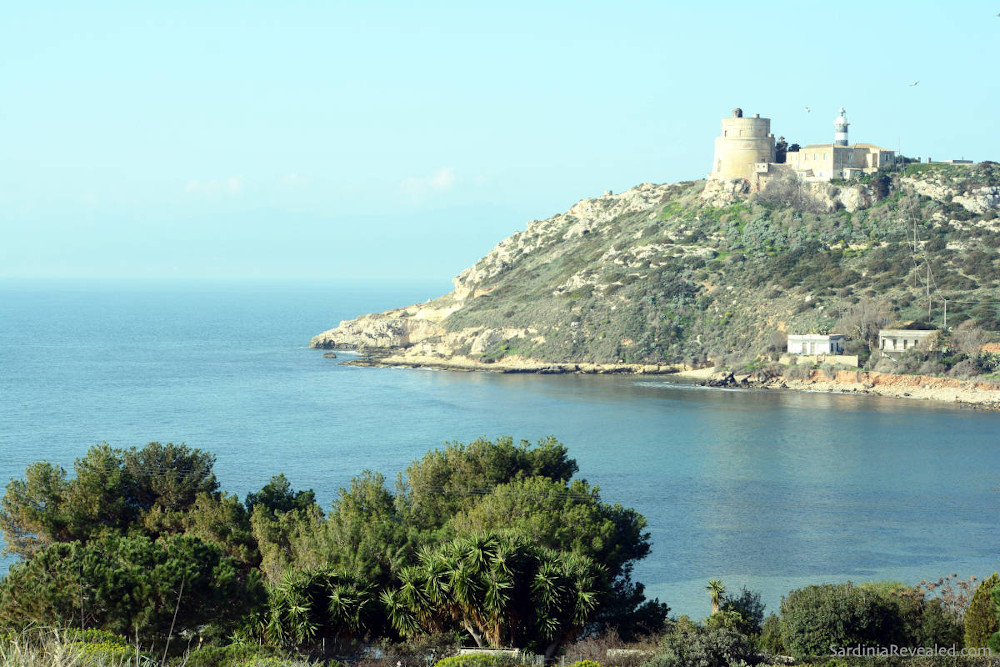
The last species of Europe’s wild horses live here
One of the things to know before traveling to Sardinia is that you are bound to find some ancient flora and fauna. The “Giara di Gesturi” plateau in central Sardinia is the natural habitat for these beautiful creatures. They are not ponies, just small horses, basically as small as they were 10.000 years ago.
Protected by the regional administration, today their only natural dwelling is this Gesturi’s plateau. It’s forbidden to bring them food and to interrupt in any way their daily routine. If you visit, try not to get too close to avoid interfering with their lifestyle.

In Sardinia, stones bleed and sing
At least when in the hands of unconventional sculptor Pinuccio Sciola. Visionary, to put it mildly, Sciola made stones appear alive. The true backbone of Sardinia and of the whole planet. When I visited him in his garden museum, he “played” his stones making me revise my idea of minerals.
We remove the evil eye
Not everyone, just the people with a “call”. Mostly women, sometimes also men, can cast a spell to protect you against the evil eye someone delivered to you. There is no social class for it, they were just born with a special gift.
They have their own tools, which can be coffee or a stone. They strictly do not accept money because theirs is not a job. If someone asks you for money, don’t trust them, they are fake. Although I doubt in Sardinia they would, the “malocchio” (evil eye) is something taken very seriously.
… And some more bizarre traditions and folktales
Contos de fuchile, tales of the fireplace. This is how Grazia Deledda defined the Sardinian folktales and popular traditions handed down orally from one generation to the next.
From fairies to evil entities, from fertility-boosting rituals to ghost tales, Sardinia is extremely rich in creepy folktales that grandmas like to tell their grandchildren. At least mine did.
It was a shelter for the Knights Templar
That’s right, after being banned and persecuted, the Knights Templar sought refuge in Sardinia and settled across the island founding also several hospitals. Some of the places where you can find Templars’ traces are in Dorgali and in the small church of San Leonardo near the town of Santu Lussurgiu.

It’s not too expensive
Unless you arrive in summer. This is one of the most important things to know before traveling to Sardinia or even before planning your trip. You are going to find much cheaper prices for both accommodation and transportation such as international flights and ferries if you travel off-season.
From mid-June to mid-September it’s considered high season so rates will be higher. But if you travel in spring, fall, or even winter, your vacation will be way more affordable.
Not only beaches, please. Pretty please.
All the things above happen far from the beach. Keep this in mind when you are planning your Sardinia trip. I know, I know, Sardinia is an island. Surrounded by the Mediterranean Sea and with some 1.900 km of shoreline, it bears the heavy record of Italy’s most beautiful beaches (I’m Sardinian, allow me some bragging).
Even though most tourists pour in summer, limiting your holidays in Sardinia to its coast will greatly narrow the opportunities to delve into local life and traditions. Visiting Sardinia in spring, for example, is a great time to enjoy the fantastic weather and the fascinating Easter celebrations.
This is definitely one of the things to know before traveling to Sardinia so that you reach the island bearing some good alternative itineraries as a break from your beach time.
Don’t underestimate mosquitoes!
Unfortunately, in some areas, you will find quite a few mosquitoes. We were pestered in Oristano’s Torregrande beach and near Arborea, but I’m sure you can find them in other places too, especially near the water. Have your mosquito repellent always easy to reach!
